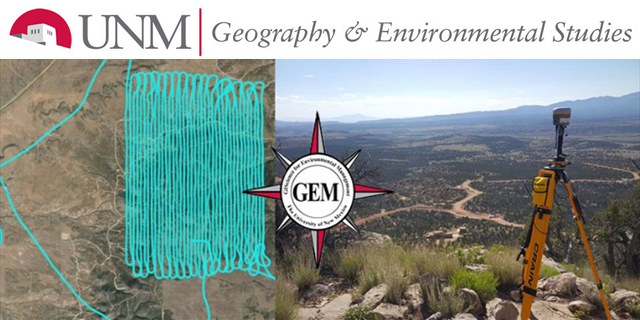
Geography ETDs
Publication Date
2-8-2011
Abstract
The existence of ancient road networks in the Chaco Canyon region of New Mexico is well documented, but roads have also been found in other Southwestern locations, as well as at other prehistoric sites all over the world. The identification and subsequent analysis of road networks can strengthen our understanding of the structure and function of prehistoric cultures. Researchers have begun utilizing different GIS and remote sensing technologies in the study of ancient road networks worldwide, but use of these technologies in archaeological research is just beginning. This research explores which GIS and Remote Sensing techniques best predict the locations of prehistoric roads and to what extent can these techniques predict the spatial and functional nature of prehistoric roads in three different study areas of New Mexico; the Manzano Mountains, Chaco Canyon, and the Salinas Pueblos. A comprehensive methodology for predictive modeling of ancient road locations was created using multiple GIS and remote-sensing analyses on two previously identified prehistoric road study areas. The reliability of the GIS and remote sensing methods developed in the first phase were applied to a group of prehistoric pueblos in central New Mexico where archaeological research indicates roads may have existed in the past, but have not yet been identified. The results of this research indicate that a combination of multiple GIS and remote sensing analyses are needed to accurately predict the location of prehistoric roads. Least cost path analysis and path distance analysis are capable of predicting prehistoric roads in a GIS environment, though to different degrees in each study area. Several remote sensing techniques, such as iron-oxide indices and edge detection filtering also are capable of identifying prehistoric roads. The varied nature of prehistoric roads and the sensitivity of the inputs indicate that it is very difficult to predict road location with a single model. Models may need to be developed reflecting the characteristics of the specific study areas.
Degree Name
Geography
Department Name
Geography
Level of Degree
Masters
First Committee Member (Chair)
Duvall, Chris
Second Committee Member
Neville, Paul
Document Type
Thesis
Language
English
Keywords
GIS, Remote Sensing, Archaeology
Recommended Citation
Heberling, Natalie. "Prehistoric Roads of New Mexico: A Synthesis of GIS and Remote Sensing Techniques." (2011). https://digitalrepository.unm.edu/geog_etds/7
